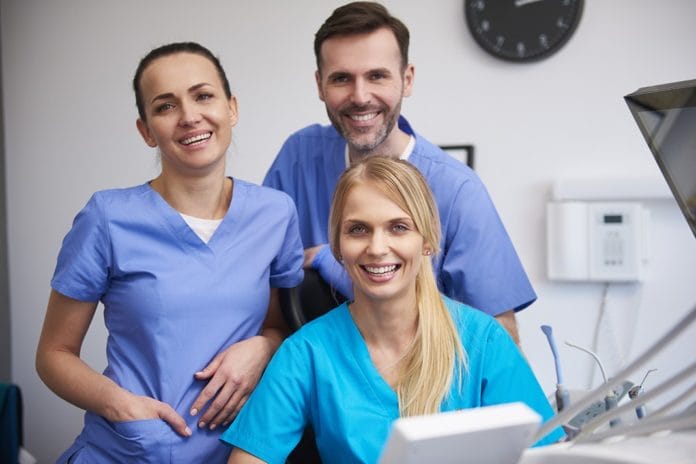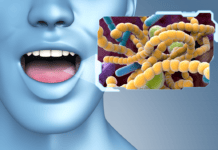Dental providers are regarded as the go-to for incidents of dental pain and oral health. We are the experts who can provide level-headed instruction and guidance to treat potentially burdensome illnesses and injuries.
From the outside, any given dental facility will display organization with its appointment system and systematic medical assessment procedures. Each treatment plan is formulated on a case-by-case basis. Offices are set up in a clean and orderly manner, often featuring décor of peaceful scenic pictures to inspire relaxing feelings.
But what happens behind the scenes among the staff members charged with maintaining the office, managing the schedule, and providing the care? Is it always as peaceful as the patient perceives, or are turbulent relationships and problematic management styles causing great difficulty between staff members? Add the stress of current events related to the COVID-19 pandemic and uncertainty in treatment modalities, and the discord can become a great difficulty in the health care team’s ability to provide safe and effective treatment.
Health of Professional Relationships
Just like our personal relationships, the health of professional relationships within a given health care team can greatly affect the quality of care given to the patients.1
- Remain aware and sensitive about coworkers’ feelings and perceptions. Have a willingness to show that you value others’ feelings and concerns through verbal validation and body language. Seek out opportunities to foster an environment conducive and encouraging to improving office processes and helping others.
- Make a conscious choice to think about and seek out an understanding of the message someone else is trying to convey. Ask questions to prompt clarification. Use a read-back method (“So what you’re saying is…?”). Remain open to the frustrations of others and try to meet that frustration with openness, rather than defensiveness.
- Be the example. Demonstrate the willingness to welcome others’ points of view. Remain consistent with your actions and reactions to stressful situations and disagreements.
Confusion with Patients
Miscommunication does not stop with the dental team. Equally as important as peer-to-peer communication is the communication between the patient and provider. The communication ensures that the treatment plan meets the patients’ needs and that the patient fully understands and complies with the treatment prescribed.
Barriers such as language and cultural differences can cause confusion and frustration for the patient.2 In these situations, it is best not to feel helpless but rather to seek out ways to better understand the patient’s perspective. For example, participating in continuing education courses can help to actively expand one’s knowledge about cultural values and influences on attitudes toward dental care.2 Additionally, consider the following methods of patient education:4
- Use of media, such as educational videos, podcasts, or social media pages to communicate health initiatives and education, may provide a more beneficial outcome. This method appeals to the changes in society in which people rely heavily on the spread of cultural norms through media.
- Through early exposure to health-related information, patients are able to self-educate and increase their understanding of medical terminology and rationale prior to engaging with a healthcare provider, ultimately increasing the patients’ ability to understand what the provider is trying to explain (“Oh, I remember reading that online…”).
Telehealth Communication
Lastly, communication in the health care field has expanded drastically with the reliance of telehealth in response to COVID-19 and efforts to mitigate reductions in appointment availability. At first thought, virtual appointments would seem like an easier option for health care. The reality, though, is that unique barriers can present with virtual dental care, which means unique considerations should be remembered:3
- Despite the elimination of in-person interaction, wearing scrubs or a white lab coat will give the perception to the patient that they are still speaking with a reliable healthcare professional.
- Maintain eye contact when telecommunicating. Taking notes and constantly looking somewhere other than at the camera gives the perception that the patient is not a high priority.
- Be prepared. The provider should know how to use the tech necessary for telehealth appointments and ensure they have reviewed the patients’ chart prior to the start of the appointment. Nothing is more frustrating for a patient than the feeling that the provider is completely in the dark.
- Ensure the setting is appropriate for telehealth. Factors such as background noise, clutter, and poor lighting can make the patient feel uncertain about the providers’ ability to be effective or take them seriously.
Ultimately, it is important to remember that communication is a multi-faceted skill that requires deep insight into our own perceptions and how we can adjust to ensure healthy working relationships, efficient office operations, and successful patient outcomes.
Now Listen to the Today’s RDH Dental Hygiene Podcast Below:
References
- Healthcare Workforce Partnership of Western Mass (N.D). Interpersonal Skills. Retrieved from https://westernmasshealthcareers.org/career-planning/job-search-tips/what-employers-need/interpersonal-skills/
- Advent Health University (2018). Interpersonal sensitivity is crucial in the healthcare environment. Retrieved from https://online.ahu.edu/blog/interpersonal-sensitivity-is-crucial-in-the-healthcare-environment/
- Heath, S. (2020). Communication tips for a good telehealth patient experience. https://patientengagementhit.com/news/communication-tips-for-a-good-telehealth-patient-experience
- Lee, C. The interplay between media use and interpersonal communication in the context of healthy lifestyle behaviors: reinforcing or substituting? Mass Communication and Society. 2015; 13(1): 48-66.
















